Horizon 2100 Moscow: Greening Deserts, Eliminating Landfills, and the End to Limited Resources
[For more details on the INTERNATIONAL YOUTH COMPETITION OF SCIENTIFIC AND CREATIVE WORKS HORIZON-2100 click here.]
[Below is the transcript of Cynthia Chung’s lecture at “Horizon 2100: The Future Image that We Want” delivered in Moscow August 24th, 2021.]
Greetings everyone, I am very happy to speak today on the subject of cities of the future 100 years from now. Of course this is a very exciting prospect and there are countless possibilities for how cities can be organised in the future, in terms of transportation, residential housing, city centers and so forth. However, what I would like to focus on in this class, is what is fundamentally needed as a foundation before we can embark on building such exciting projects of the future.
This foundational backbone of any future city will require a means for producing its own clean water and adequate amounts of food, it will require sufficient energy production to power these needs which is reliable and sustainable and it will require a means in changing its present relationship to how we use and dispose of our resources such that the process must become much more efficient than it presently is, and it must produce much less waste. Such cities of the future will be comprised of large populations, and we will require a completely new system of physical economy in order to address those needs. If we remain on the current trend of today, we will never accomplish the cities of the future, for we will not have the population size nor the high energy yield required to produce such things.
Greening Deserts
So let us begin our journey. First off the question of greening deserts. The greening of deserts will address shortages of water and food and will make lands that are presently inhabitable, habitable, not just for bare survival but with a high standard of living.
Presently there is over 16 million square km in area that makes up the world desert, About 2/3 thirds of the world is desert, with the Sahara making up 9.2 million square km of this area.
Not only is 2/3 of the world desert, but grassland regions are presently experiencing desertification, and is a major cause in water and food shortage,
In addition there is a lack of clean water leading to further sickness and disease.
Sandstorms can also cause a lot of damage to city centers costing up to millions of dollars in repairs, money that could be much better spent elsewhere.
Transportation of resources is also greatly slowed down by this.
And sandstorms can cause serious prolonged periods of air pollution in cities which cause numerous deaths a year.
Lastly, large regions of desert area can cause the formation of extreme storms. The Sahara desert for example, can cause hurricanes to hit the eastern coast of North America due to the abrupt temperature change from air currents heated passing over the Sahara to rapid cooling once over the Atlantic Ocean.
In areas where extreme desert has already formed, the challenge is great, however, there has been significant progress in this.
Palm trees are very good for greening desert regions. They provide shade, they work as a wind shield and can stabilise the soil, and they also provide food. The shade provided can allow for other crops that are less heat resistant to grow more efficaceously.
Egypt has managed to plant trees in the desert using wastewater. The Serapium Forest, which has boomed despite the drought and rainfall deficit, consists of 200 hectares (494 acres) of trees planted in Ismailia city, in northeast Egypt and has set a precedent for other African countries.
China has also had immense success in greening its deserts with robust tree planting, and have succeeded in changing desert ecosystems to sustain green life over the long term.
However, all of these projects, which have all been applied to great effect also require a lot of water.
Thus the question is where will the water come from?
Well there are several options, all of which need to be assessed in terms of the best plan for a specific region, including cost.
Water direction projects to replenish already existing water systems that have dried up are one option, Transaqua is an example of this.
It would take water from the Congo river system and redirect it to Lake Chad which would then be able to support growth that could eventually help to further green the Sahel and later the Sahara desert.
Although the majority of water redirection proposals are nothing new, the majority of these plans have yet to be realised. A major reason for this is that our present technology capabilities have lagged behind our production and development needs, I will speak more on this shortly. Thus projects like these presently are extremely costly, time consuming and require a lot of materials that many countries do not produce in adequate amounts.
The Lake Chad replenishment project is a proposed major water diversion plan to divert water from the Congo River basin (5% of the water runoff) to Lake Chad to prevent it drying up.
It may seem like a lot of work for these water diversion projects but the payoff is also great. In the case of the Lake Chad replenishment project, when done it will produce massive amounts of hydroelectric energy, which will be very cheap, and it will also serve a very important role in flood controls that can save crops and provide stable ground for industrial development.
Another exciting prospect for the future is weather control, through the controlled ionization of river systems in the sky!
Atmospheric ionization systems have been successfully used to increase precipitation, and affect associated weather processes. This has been done in multiple locations around the world, cumulatively for three decades. With further development of these technologies, droughts around the world could be overcome in a completely new way: by the management of the water resources of the sky!
It has been reported in multiple studies that periods of low solar activity, and high galactic influence (that is cosmic rays) affect the amount of rainfall and also the amount of glaciation formation.
According to Sergey Pulinets, who has over 35 years experience in space plasma physics and currently works at the Russian Space Research Institute, clouds which cover our planet, to a great extent, are formed due to galactic cosmic rays, which produce ionization. These ions then become the centers of water vapor condensation, and nucleation and formation of drops and clouds, which we see every day; and there is a correlation between the cloud coverage of our planet and the variations of the fluxes of cosmic rays. This has been confirmed by numerous studies, most notably that of Henrik Svensmark who found that there was a 95% correlation between cosmic ray intensity and cloud formation from decades of observation.
When we are in different galactic environments we see changes in our climate system. We also experience temperature change depending on whether we are moving above or below the galactic plane, as pictured below. Thus through observations of many studies, we are finding that galactic processes dictate how climate and weather are expressed on earth.
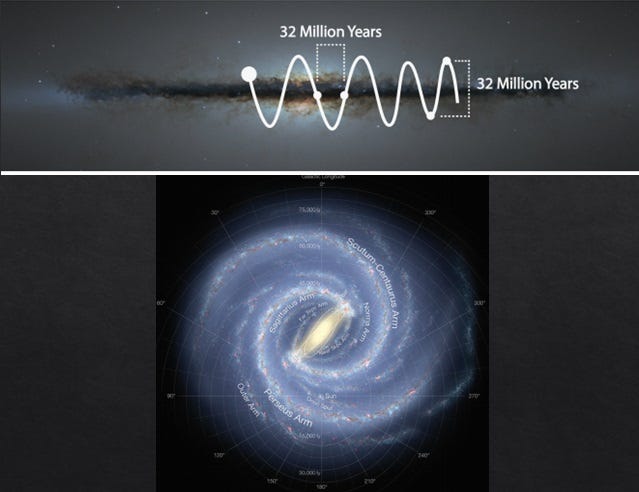
A study by Pérez & Peraza found that modulation of fluxes of galactic cosmic rays could also be the cause of Earth’s periods of ice ages. And that it could be connected with movement of our Solar System within the arms of our spiral galaxy as depicted in the above picture. They hypothesised that when the Solar System is inside the arms, there is more dust, so there is less flux of the galactic cosmic rays. And between the arms, we have the larger fluxes of the galactic cosmic rays. And these periods coincide, temporally, with periods of increased and decreased temperature of our planet.
Pulinets ended up working with a Mexican company named ELAT, which made experiments that stimulated rainfall. They had contracts with the governments of different states, especially in the drought areas of Mexico, such as in the Sonora desert, to produce rain to increase the harvest in these areas, this idea was first proposed by a Russian scientist, Lev Pokhmelnykh, who is the founder of the ELAT company.
They produced rainfall by using an iron mast that is connected by thin wires to peripheral towers. If for example, you put positive potential on this installation, the positive ions will be moved by the electric field up to the upper layers; and moving to the upper layers, they gain more and more water molecules and become nuclei to form clouds.
If you put your installation near the seashore—you can collect the humidity and then transport it, because you can put the different potentials (one positive the other negative) between two installations. This creates movement of the air, which is filled by [these nuclei] for the formation of clouds inland.
This thus helps to move air filled with humidity inland for cloud formation and rainfall further inland.
Pulinets has had impressive results using this process, and was able to fill up three dams in Mexico using this technology after one and a half years. They were even able to fight off forest fires in the Yucatan Peninsula, creating artificial rain using this technology, which yielded about 20-30% increase in precipitation.
Pulinets has remarked that many physicists who study the atmosphere, think in terms of hydrodynamics. For example, describing typhoons, hurricanes, they look only at the hydrodynamic mechanical movement, but they forget that we are living in an electrical world: there is a huge electrical potential on the top of the hurricane.
We live in the constant electric field which exists between the ionosphere and the ground; the potential difference between the ionosphere and the ground is near 250 kilovolts, and sometimes it can gain 400-500 kilovolts. And on the ground surface, the vertical gradient of the electric field is 100 or 150 volts per meter. If you are a tall person, between your feet and your head, you could have a 200-volt potential difference all the time!
This potential difference is created by thunderstorm activity globally. Thunderstorms charge the ionosphere positively in relation to the Earth, and we have a closed electric circuit, which is called the “global electric circuit”.
The picture here looks like something out of a sci fi movie but in fact is a rather natural occurrence. The phenomenon is called Sprites or Red Sprites which are large-scale electric discharges that occur high above thunderstorm clouds, giving rise to a quite varied range of visual shapes flickering in the night sky. They are usually triggered by the discharges of positive lightning between an underlying thundercloud and the ground.
Sprites appear as luminous reddish-orange flashes. They often occur in clusters above the troposphere at an altitude range of 50–90 km (31–56 mi).
Thus as Pulinets makes the point, their ionization technology uses everything that is given to us by nature, helping a little bit with this ionization to create additional centers of nucleation.
Simply put, you form nuclei near the ground surface, and then transport them up with an electric field. This will create nucleation centers that will form into clouds. This can occur in any level of relative humidity. Of course, the higher the humidity the more effective the process.
We have found through studies that the Sun, as well as high-energy radiation (aka cosmic rays) from the galaxy, are actually a constant input shaping the environment of the atmosphere, affecting climate, weather; and how water moves through the water cycle.
Thus Pulinets ionization technology, is actually acting in a very similar fashion to the ionizing effects of the galaxy.
That is, both the sun and galactic cosmic rays (which has much higher energy) are the only known sources of ionization. And the altitude of penetration of these particles into the atmosphere depends on the energy of the particles. The solar particles have lower energy, so they cannot actually penetrate to the lower layers of the atmosphere, and they lose their energy at altitudes, say, from tens to hundreds kilometers: This is the source of the Northern Lights. They excite the molecules, and atoms, in the case of the northern lights, its is oxygen and nitrogen particles that are excited, which cause us to see the green and red lines of the polar lights.
As we gain a better understanding of our galactic processes, we will also gain further understanding and control on how to control weather formation. In the future this will likely be the cheapest and easiest way to green deserts.
C02 generators are forms of technology used today to grow vegetation in greenhouses and show much promise in their use for space travel, they can pump up to 1500 parts per million of C02 and the average C02 in the earth’s atmosphere is 400 parts per million.
C02 generators offer a lot of promise in producing yield in typically inhabitable regions such as Antartica or in space such as on the Moon or Mars.
Turning Landfills into Resource Mines with the Fusion Torch
Next we will discuss turning landfills into resource mines.
The next domain for the future in industry which will completely revolutionise our relationship to resources and waste is located in low and high temperature plasma processes, which will dramatically increase the productivity of steel, iron, titanium and any other metal resources needed for a modern society.
The plasma torch functions by injecting gas into the chamber, the electric discharge traveling from the negatively charged cathode to the positively charged anode heats up with the resistance from the gas to such a high temperature that ionization occurs, which can reach temperatures of 15,000 degrees Celsius, which can reduce any material to its elemental components.
The next step in more powerful and efficient plasma processing will be in fusion plasma torches which will open up a new realm of possibilities in the degree of precision in which we can transform energy and matter.
Contents put into the fusion torch are shock vapourised and become part of the plasma as separate ionised elements and electrons. Once in a plasma state various methods can be used to select the desired elements and isotopes based on their atomic as opposed to their chemical properties, allowing for the formation of very specific chemical compounds creating batches of very pure chemical structures tailored down to the isotopic level.
This will allow for the formation of more advanced materials then we currently can produce, and which are presently impossible to create with lower energy yield technology.
Thus with plasma torch technology, the pure elements can either be safely released into their environment, as is the case for nitrogen or oxygen, or they can be totally recycled as in industrial raw materials, absolutely ALL POLLUTION ARE THUS ELIMINATED.
The plasma torch technology has been commercialised for decades but it is not in widespread use due to its large use in electricity, which makes it currently very expensive. Only military bases and some specialised industries use it presently.
However, with fusion technology, electricity for nations will become the cheapest it has ever been, making it economically viable for all industrial waste, industrial pollution, landfills, and garbage islands in the ocean to be recycled into resources that can be used once again for commercial and industrial needs. There is some controversy over when if ever we will achieve nuclear fusion, I will not address this question here since I know that Dr. Tenenbaum will have adequately addressed this question in his lecture to you.
Suffice to say that the plasma torch technology will not only get rid of all landfills in a clean and sustainable manner, but it also means that there will be no such thing as waste anymore. Since everything we use, can be used over and over again as a resource with no end. Even the material of old, out of date infrastructure can now be reused, once broken down to its elemental components, to supply improved material for new infrastructure. Wood burning and fossil fuels will no longer be needed.
Water canals, nuclear plants and high speed rail all need a lot of steel, much higher than what is our current capacity to produce worldwide.
In a fusion economy there will no longer be such a thing as limited resources, and zero-sum artificial restrictions will cease to exist. There will be enough not only to support a growing population on earth, but to support populations that in the future will inhabit the surface of the Moon and Mars.
Fusion will also produce the rockets we require in order to travel back and forth to Mars in a timely fashion.
In a fusion economy, the future will look towards the existence of yet-to-be created potential.
The greatest good for the greatest possible number will become a reality. Resource wars and economic competition over limited resources will no longer be and cooperation towards universally beneficial projects not only cross continental but interplanetary will become the new norm.
There will be no limits to growth and thus no limits to the prosperity that can be achieved by humankind in the future cities of the world.
So what are we waiting for, let us begin our cities of the future, today.
Cynthia Chung is the President of the Rising Tide Foundation and author of the books “The Shaping of a World Religion” & “The Empire on Which the Black Sun Never Set,” consider supporting her work by making a donation and subscribing to her substack page Through A Glass Darkly.
Also watch for free our RTF Docu-Series “Escaping Calypso’s Island: A Journey Out of Our Green Delusion” and our CP Docu-Series “The Hidden Hand Behind UFOs”.





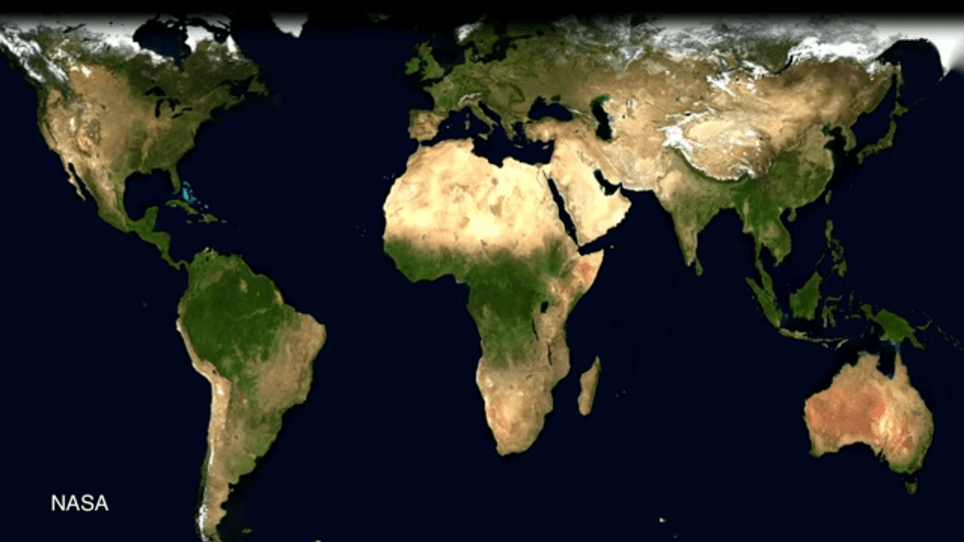
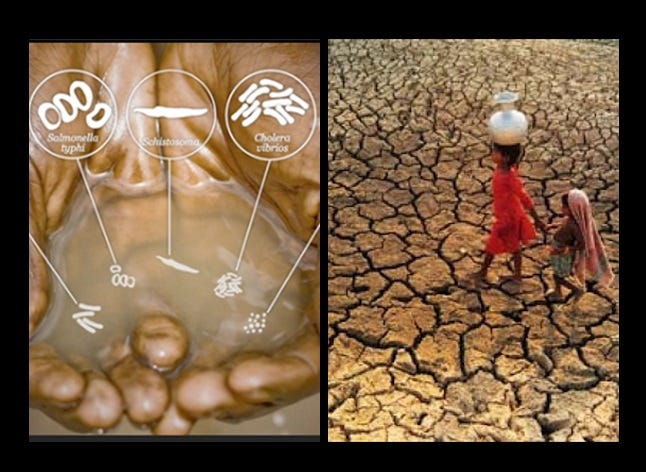
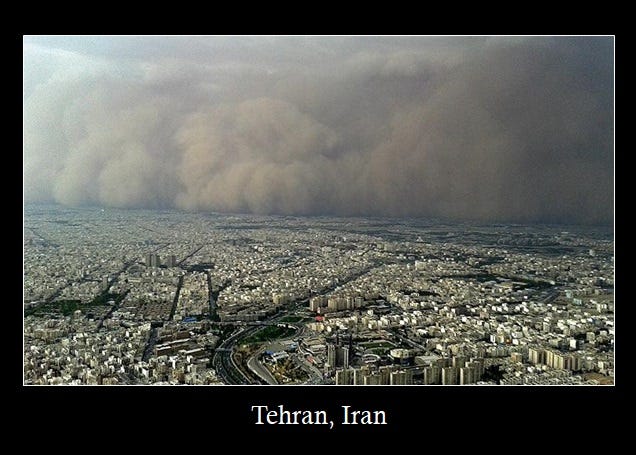


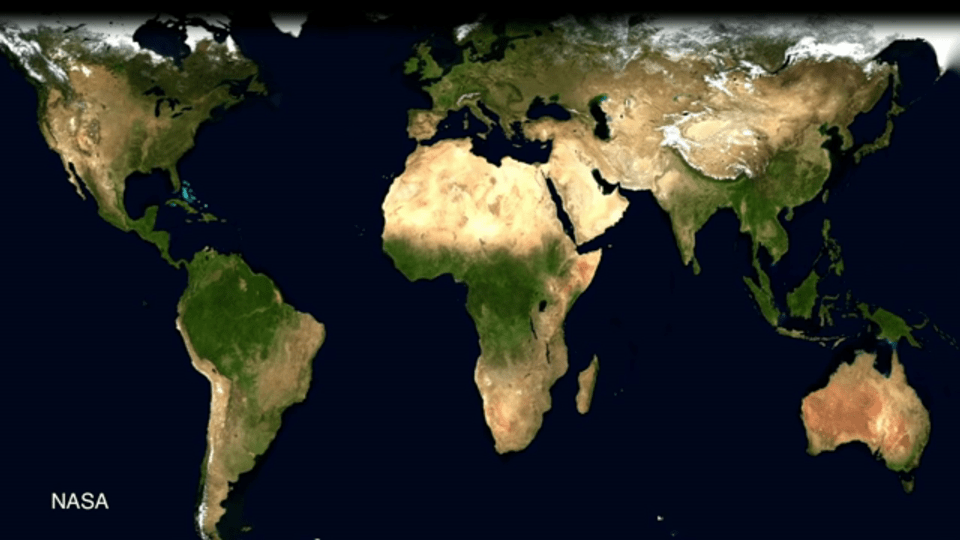
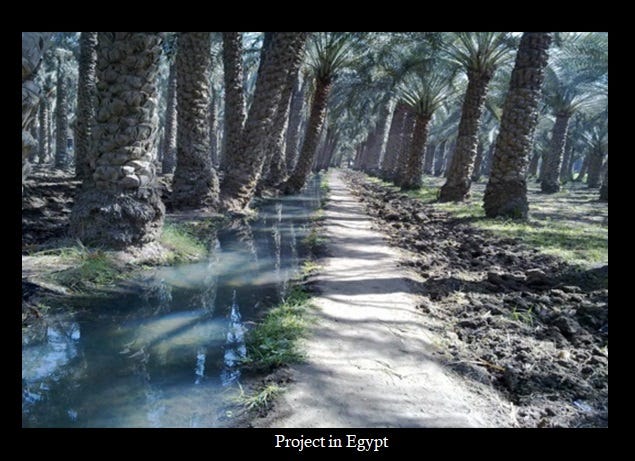
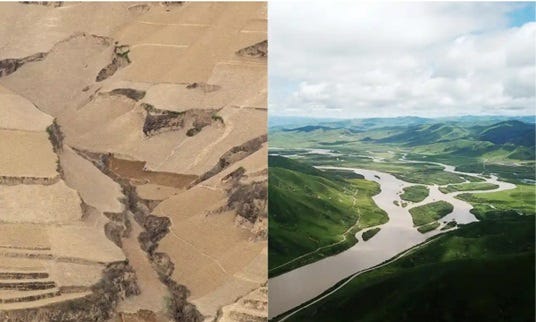
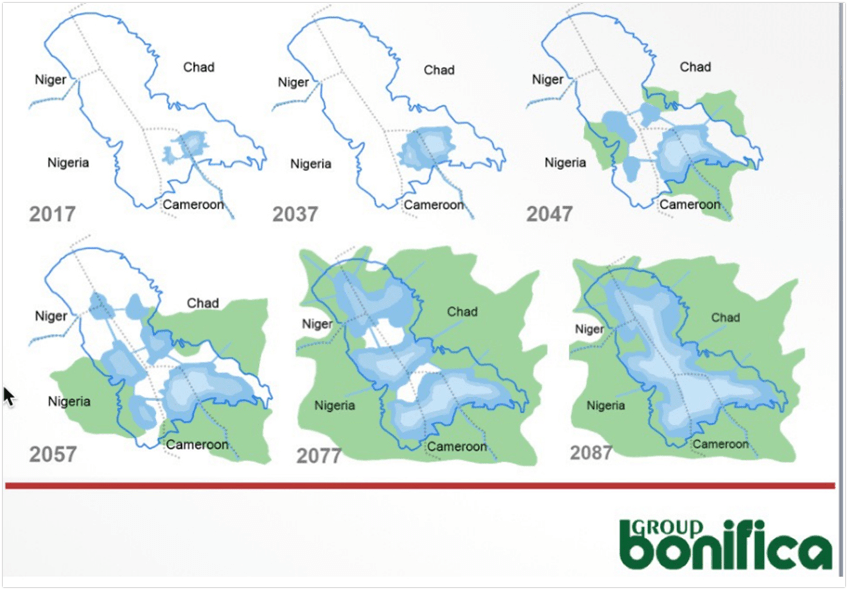
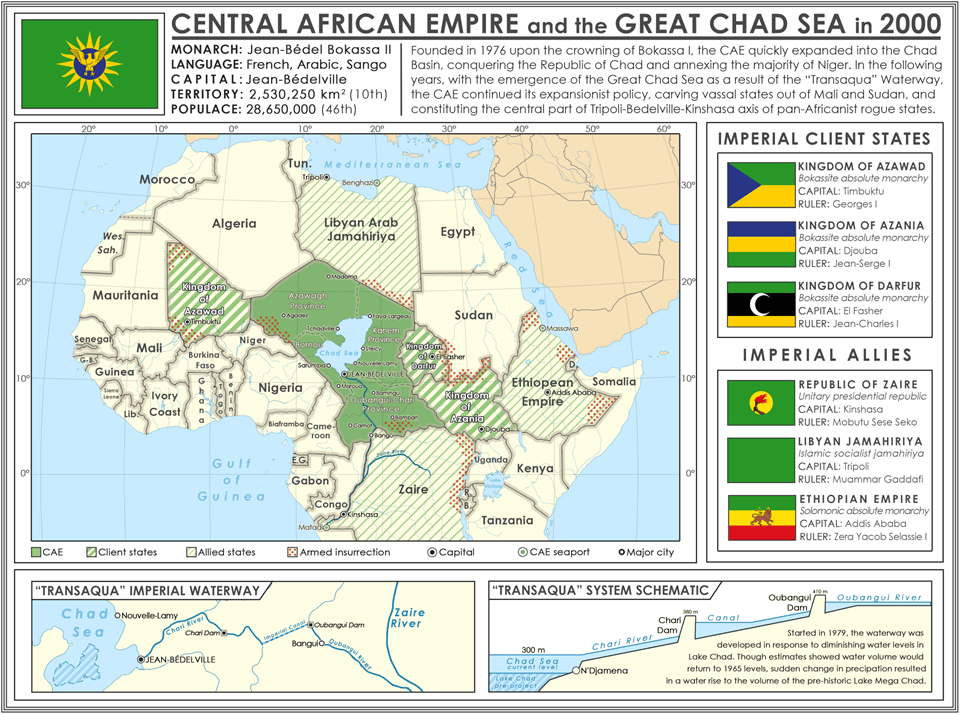
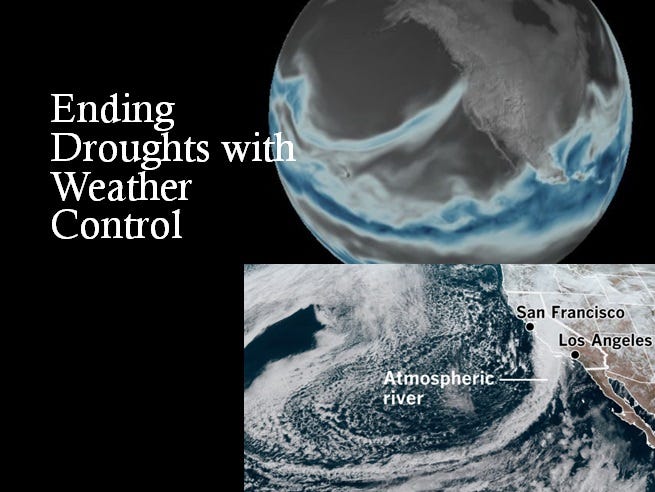
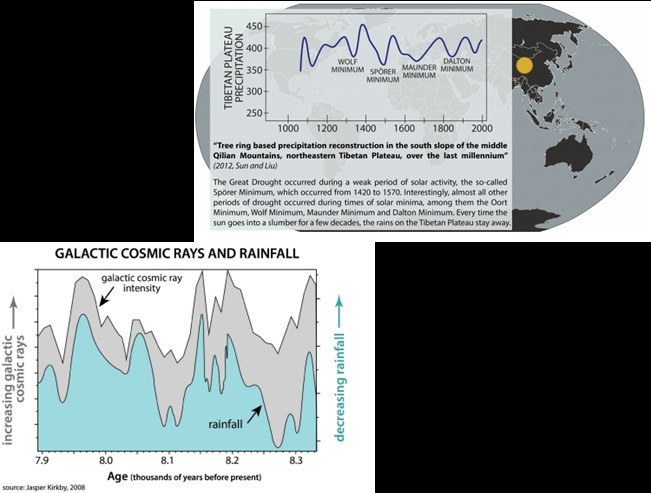
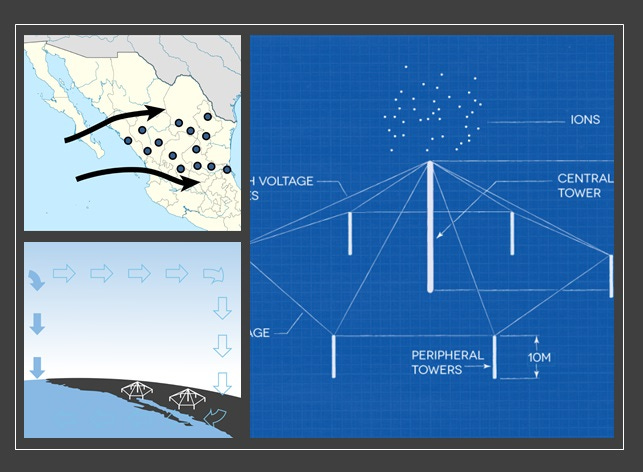
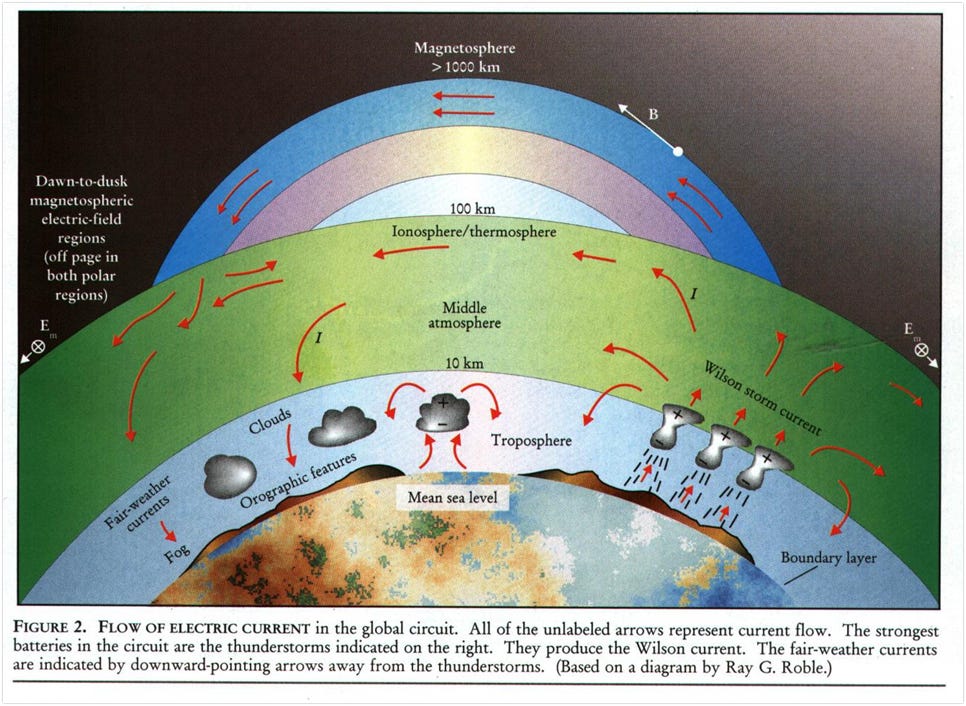
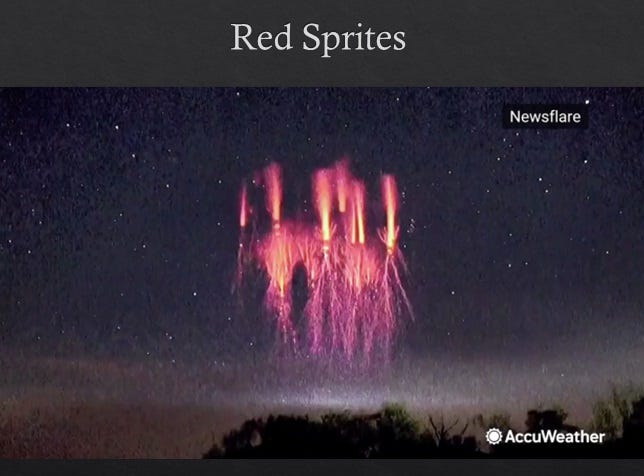
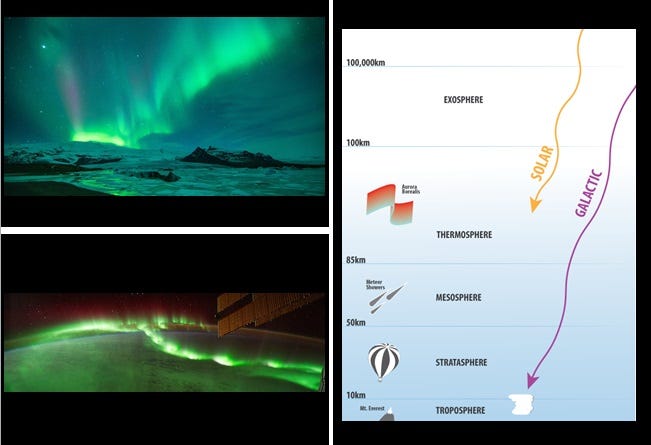
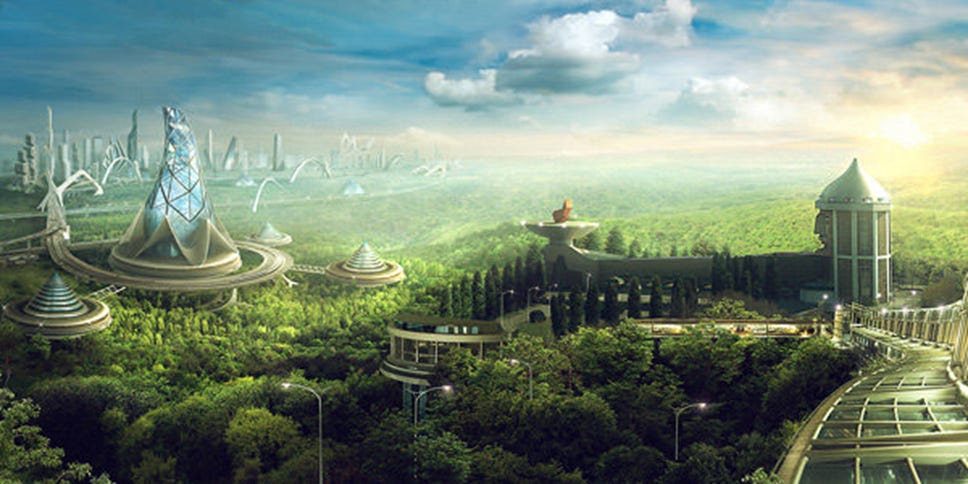


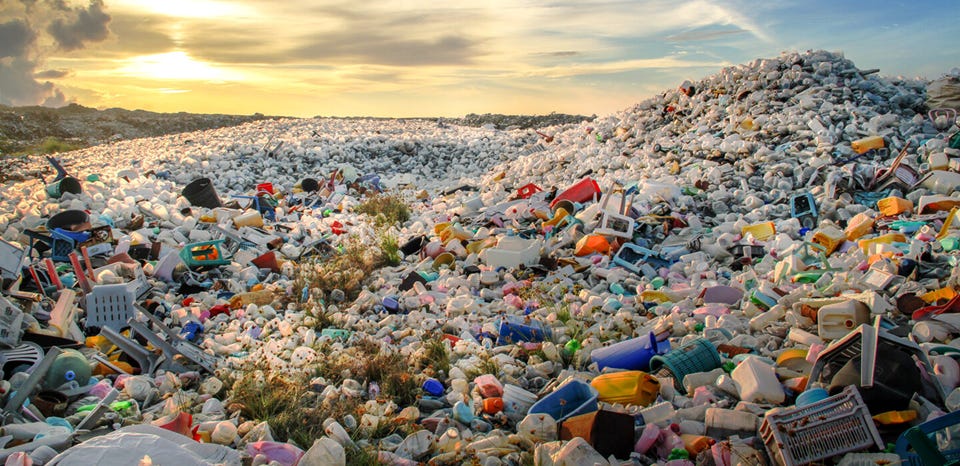
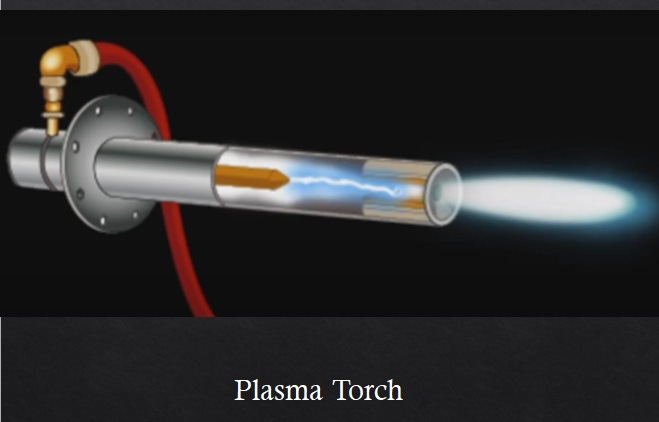
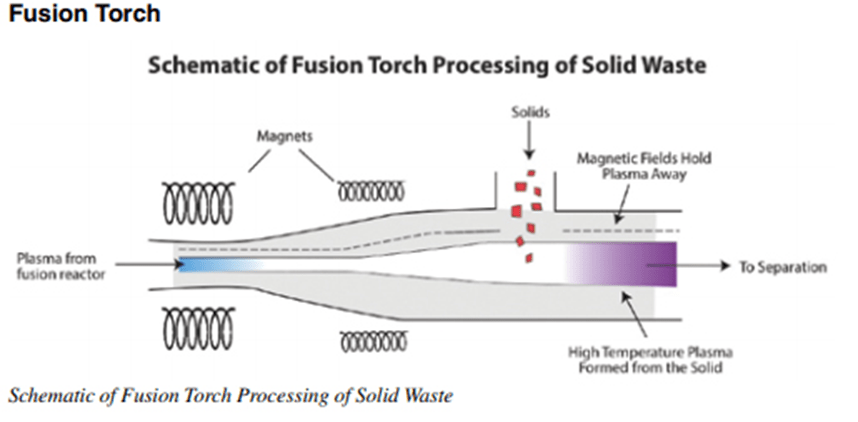
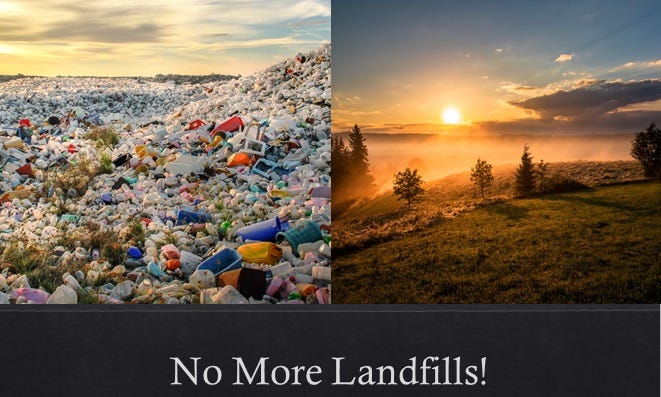
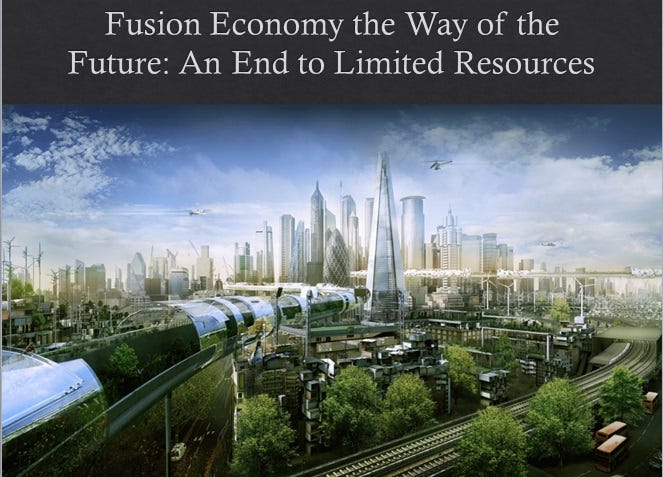
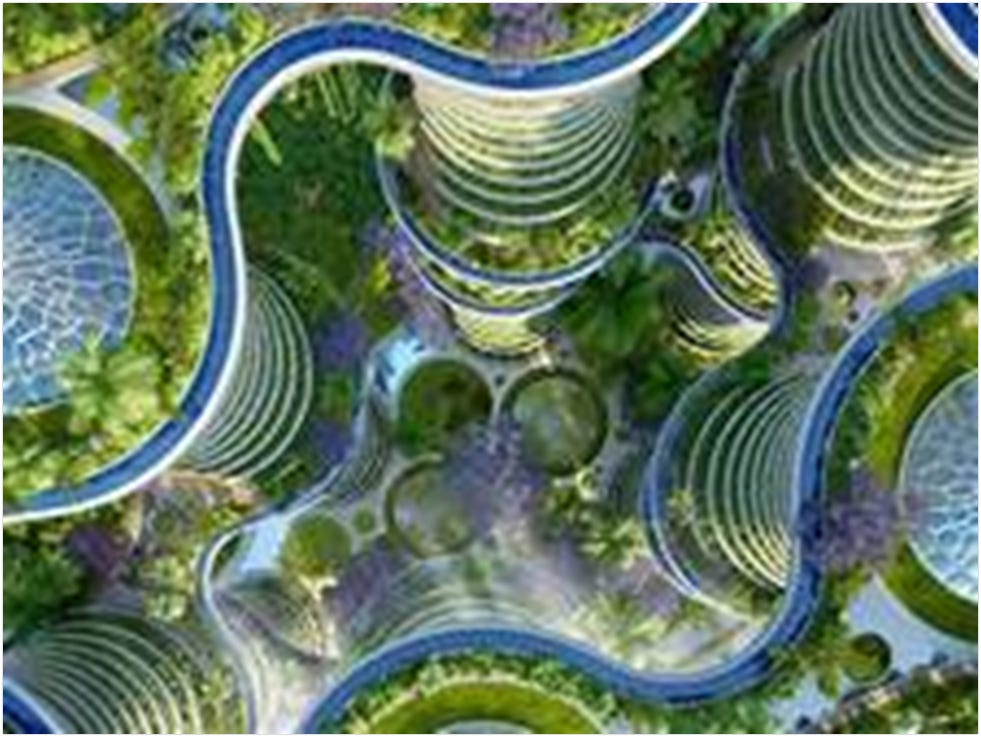

Oh my God! Cynthia! Your article here has just single-handedly transformed my world view! Lol(Joyful Laughter!) Thank You!!!
Good optimistic piece that needs to be highlighted further and discussed further and researched further and trialed further---and maybe one day implemented further. Still waiting for the multiple road blocks and road blockers to be removed to get sane people on the right/same page so furtherance can begin(in earnest), propaganda-free. God Bless!!!